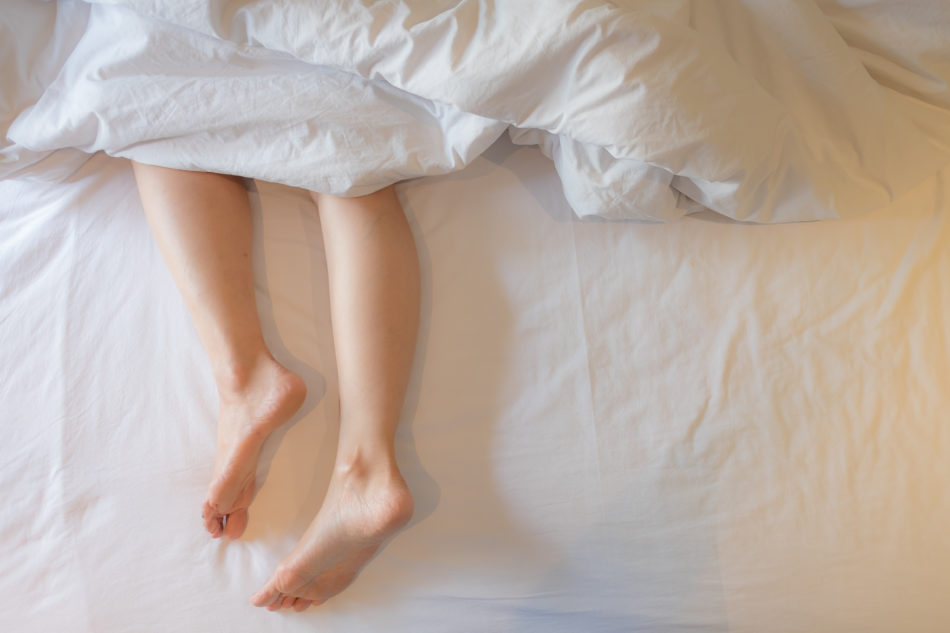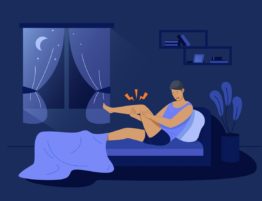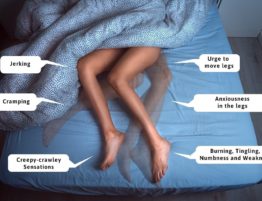
The Symptoms of RLS
Restless Leg Syndrome (RLS) is a common issue for many people. Studies have estimated that between 10-15% of the total population may be affected. 5% severely so, and the subsequent lack of sleep causes a devastating effect on mental and physical health and life expectancy.
Often, these patients complain of an uncontrollable urge to move their legs, usually because of an uncomfortable sensation. It typically happens in the evening or nighttime hours when sitting or lying down. Moving eases the unpleasant feeling temporarily. Many describe the feeling as “ants are crawling through my legs,” or “soda running through my veins.”
Diagnosis is based on the type and severity of symptoms and there is no blood test or imaging study that can be used to diagnose RLS. Treatment is usually aimed at relieving the symptoms and improving sleep. Typically, doctors prescribe medications that mask these symptoms. These have varying success rates usually related to the severity of the symptoms. Those with milder symptoms typically get better relief, but the medication can create unwanted side effects and even the threat of addiction.
What Causes RLS?
So, what causes RLS? For several years, Dr. Anderson and I, along with several other doctors from the Association of Extremity Nerve Surgeons (AENS) have been treating patients for pain and numbness due to neuropathy caused by pinched or compressed nerves in the legs.
Often the treatment involves surgical decompression of the nerves that is similar to carpal tunnel release. In addition to pain, burning, and numbness, these patients will often also complain of the restless leg symptoms described above, and difficulty sitting or sleeping. Patients with more severe symptoms are desperate for relief, as it creates exhaustion and strains work and interpersonal relationships and well-being.
We almost universally see dramatic post-operative improvements in the RLS symptoms along with improvements in the pain, burning, and numbness from the neuropathy. We began to wonder what the potential link between nerve entrapment and RLS could be. That’s what inspired us to begin doing research. Dr. Anderson has published one scientific study already. There are other studies upcoming that provide consistent data to show that RLS can be reversed with decompression techniques.
15 Years of Suffering From RLS
Today, I want to tell you about one particular patient case. In this case we see how RLS symptoms can be significantly improved by nerve decompression surgery, and how to test this prior to surgery to see if this type of surgery will help.
This patient is a 52 year-old female with a 15 + year history of RLS. She had significant issues with sleep and had been treating this with drug therapy, Iron supplements, vitamins, and diet changes with no improvements.
For about a year prior to her first visit with me she had been wearing an activity monitor to track her sleep. She quickly realized that on most nights she was showing signs of significant movement every 20-30 minutes. She didn’t always fully wake up but was concerned that her poor sleep quality was becoming a problem.
Is It A Pinched Nerve?
One technique that is very helpful to test if pinched nerves are causing the symptoms is to perform diagnostic nerve blocks at the affected nerves. This simply involves injecting a small amount of cortisone and local anesthetic next to the nerves. If the nerves are chronically pinched and damaged, then the injection will temporarily calm them down.
Most often these patients will have 5-7 days of relief of their symptoms after the injections. If so, then it is likely that nerve decompression surgery will help that patient. If the injections do not provide relief, then the surgery will not likely help.
Today, Her Symptoms Are Gone
For this patient, the injections gave her quite a bit of relief for about 2 weeks. Once the symptoms started to return, she was ready to schedule the surgeries. I do not typically operate on both legs at once so I performed surgery on her right leg first, then her left leg 3 weeks later.
Her symptoms resolved quickly and she has not had any return of RLS in 6 months after surgery.
This type of surgery is very successful for 85-90% of RLS sufferers who are appropriate candidates. They can often return to their lives with little to no symptoms.
If you or someone you love has been suffering from RLS, please come see us. We have treated hundreds of patients successfully, and we would love to help you get your life back.
————————————————————————————————–
Learn about more treatment options for RLS.
To make an appointment, click here.






Write a comment: